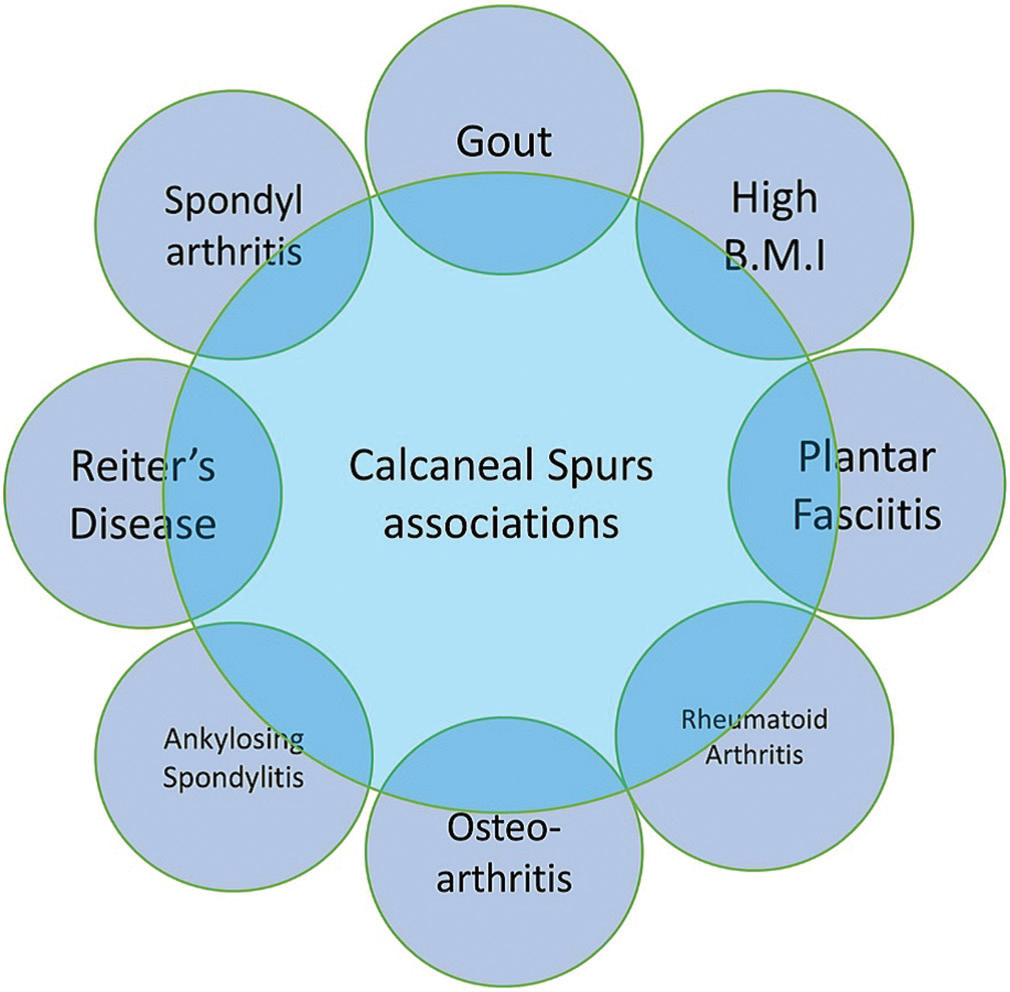Plantar calcaneal spurs and their connection with lumbar herniating discs
DOI:
https://doi.org/10.17532/jhsci.2023.2201Keywords:
Spurs, herniation, heel pain, Visual Analog Scale, elderlyAbstract
Introduction: Calcaneal spurs are bony triangular projections of varying sizes that are found on the calcaneum. By analyzing the incidence of plantar spurs and lumbar herniated disks, the current research aims to provide a reliable baseline for determining the pathological significance of spurs with herniated disks.
Methods: Consecutive patients who had visited a local physiotherapy clinic for plantar calcaneal spurs between October 2022 and February 2023 with no self-reported comorbidities such as diabetes or vascular diseases were qualified for the study. Of the eligible subjects, a total of 84 patients were randomly selected from the clinic’s database. All 84 patients were subjected to weight-bearing lateral foot radiographs and magnetic resonance imaging scans. A Visual Analog Scale (VAS) was used to measure heel pain. Associations between the presence of spurs, herniated disks, sex, body mass index (BMI), and heel pain were then explored.
Results: Of the 84 patients, 40 were males (48%) and 44 females (52%), with a mean age of 64.2 ± 5.6 years. The mean BMI was 28.5 ± 5.2 kg/m2. From the analysis of the imaging examination results, of the 84 patients with calcaneal spurs, 40 (48%) had lumbar disk herniation at L5-S1, 38 (45%) at L4-L5, 1 (1%) high lumbar herniations, and 5 (6%) no hernia. Women accounted for 45% of L5-S1 herniations and 41% of L4-L5 herniations. Pearson correlation between the variables speaks for a positive weak (r = 0.33) and significant relationship between VAS and weight and between VAS and BMI (r = 0.436, p < 0.001).
Conclusion: Given the high percentage of patients suffering concomitantly from plantar calcaneal spurs and discal hernias (94%), we assume that there might be a probable link between the two disorders.
Downloads

Downloads
Published
License
Copyright (c) 2023 Elton Spahiu, Altin Erindi, Lindita Agolli

This work is licensed under a Creative Commons Attribution 4.0 International License.










